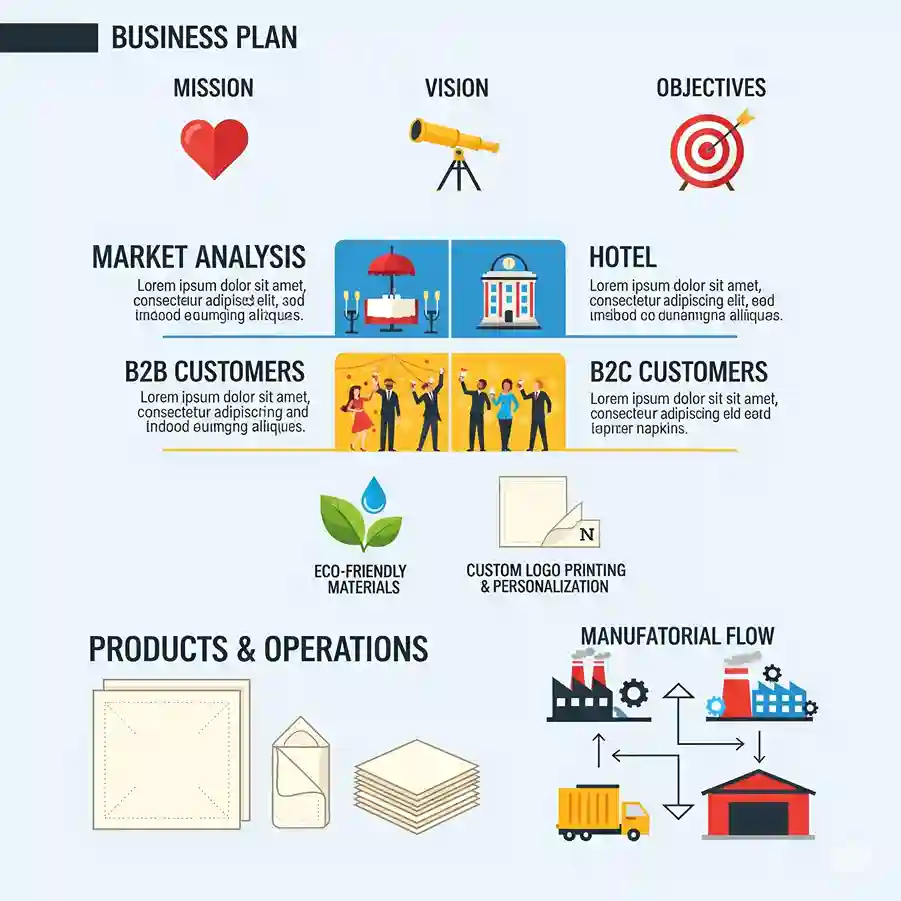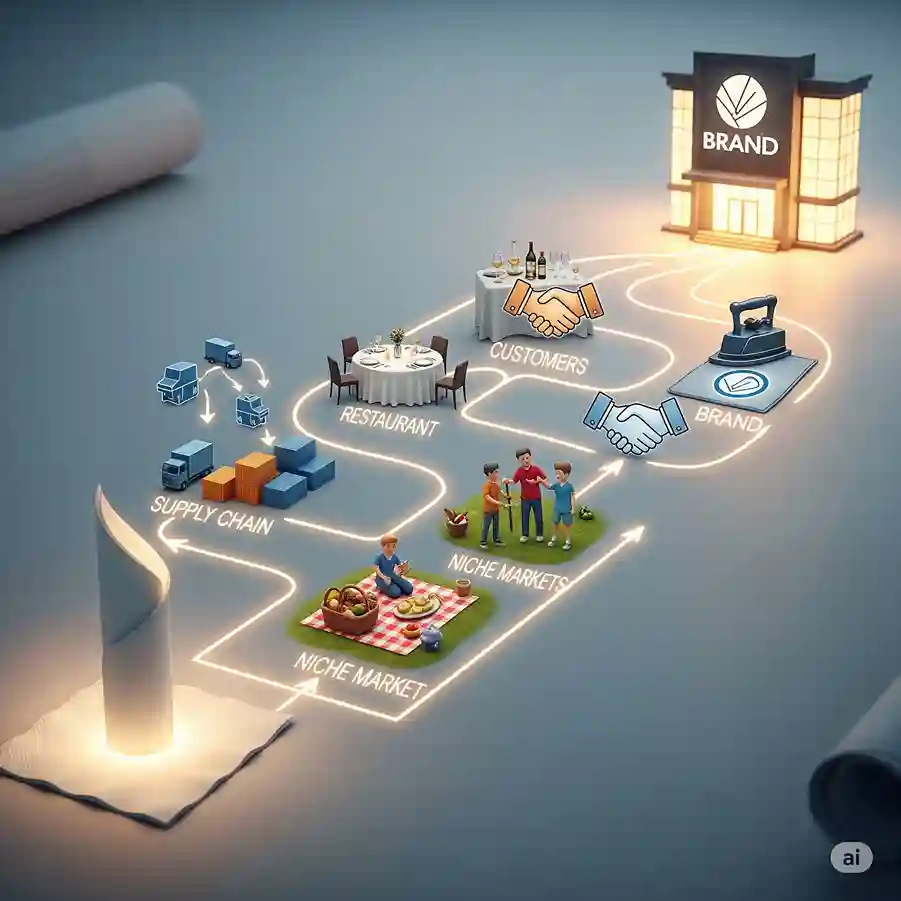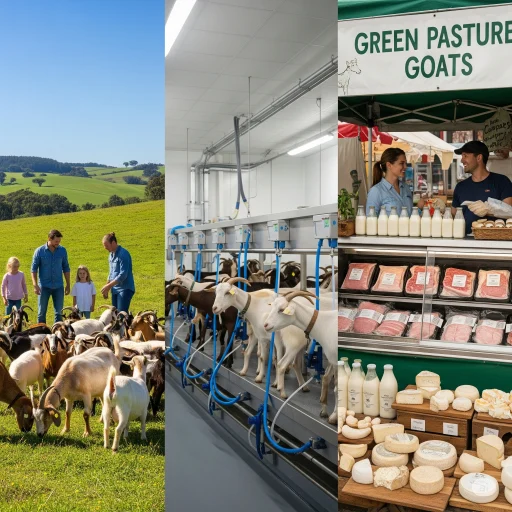Every day, the humble napkin can be found at dinner tables, in cafes, or during celebrations. The napkin business is surprisingly lucrative and robust for new entrepreneurs because of the constant and unwavering demand. It may appear to be a simple item, but building a business around it takes a well-executed, strategic plan. It’s not only about making a paper rectangle; it is about finding a niche, understanding the market and creating a brand.
This comprehensive guide will help you create a comprehensive business strategy, turning your idea from a fleeting thought into a blueprint for a profitable enterprise. Our article will guide you through every critical step to ensure you have the confidence and clarity to move forward.

Section 1. The Executive Summary: Your Business in a Glimpse
You must first create a strong executive summary before you dive into the details. This is the “elevator speech” of your business plan. This section should be the last to be written, but it is placed at the top. It provides a concise overview of your venture that captures its essence.
The Mission statement must be clearly stated in your executive summary. This is the “why” of your business. Your mission might be, “To provide ecoconscious hospitality businesses high-quality, customized napkins that enhance brand identity.” Define your Vision. This is the impact you want to have in the future. You may want to become the leader in biodegradable napkins for your area.
You should also outline your business objectives. These are measurable, tangible goals. As an example:
- Within the first year, secure 20 B2B clients who will return.
- By the end of the second year, you should have a profit margin of 15%.
- Launch an e-commerce platform for direct-to consumer within 18 months.
Highlight your Keys for Success. What gives you confidence that this will work out? It could be that you have exclusive access to sustainable materials, the latest printing technology, or a new distribution model.
Read Our Project Report: Click Here
Section 2. Market Analysis: Identifying your Battlefield and Customer
Understanding the market is key to success. To be successful, you need to define your Target Market. Are you targeting the B2B (Business-to-Business) or B2C (Business-to-Consumer) sector?
- B2B customers: This segment consists of restaurants, cafes and hotels. It also includes corporate event planners (including caterers), corporate event planners and airlines. They are primarily looking for bulk quantities, reliability, consistency in quality and cost-effectiveness. Custom branding is also a huge opportunity.
- B2C customers: This segment includes ordinary households and individuals who plan parties, weddings or special events. They are attracted to aesthetics, original designs, premium feeling, and ease of purchase.
Read More: Start Production Business of Sanitary Napkins – Here Is How To Do It.
The next step is to analyze Industry trends. Modern consumers are increasingly environmentally conscious. A significant trend in the industry is the move towards more sustainable materials, such as bamboo, recycled papers, or airlaid (which feels like cloth and is durable). Personalization is another major trend. Customers, B2B as well as B2C alike, want custom prints, logos and monograms.
You must therefore conduct an Analysis of Competitors. Identify direct and indirect competition. The low-cost, mass-market segment may be dominated by large corporations. Differentiation is your opportunity. What will make you different? You can compete in:
- Specialization in a niche: Concentrating on 100% compostable napkins.
- High Quality: Multi-ply napkins are thicker and more absorbent.
- Unmatched Customization Provides a user-friendly design tool online for custom orders.
- Service Exceptional: Subscription models and delivery next day for local businesses.
Read More: Starting a Sanitary Pad/Napkin Manufacturing Business. Production of Sanitary Napkin/Pad Industry
Section 3 – Products and Operations: The “What” and the “How” of your business
You can now define Product line. Go into detail. You will not just sell “napkins” You’ll offer specific types such as:
- Dinner Napkins (2 or 3 ply): Ideal in restaurants and formal occasions.
- Luncheon Napkins: Standard square size for casual eating
- Cocktail/Beverage Napkins: Smaller Squares for bars and Events
- Dispenser Napkins: for fast-food restaurants, cafeterias and other similar establishments.
- Material Focus: Indicate whether you are using virgin pulp, recycled papers, bamboo fibers, or premium air laid papers.
Let’s move on to the Operation Plan. The logistical heart of your business. Decide on your business model. You must decide on your business model.
Your plan should detail all the necessary machinery (paper rolls and inks, packaging, etc.) as well as the raw materials you will need (paper, inks, packaging). It must also include the workflow of production. This model is expensive but allows for the best control of quality and margins.
Your plan should focus on creating a strong supply chain if you are starting as a seller. You will need to find reliable manufacturers, negotiate prices, and create a logistics plan that includes receiving, storing, and distributing products. This model requires less capital and lets you focus on sales and marketing.
The plan should also include the location (a manufacturing or warehouse unit), quality assurance protocols, and logistics for delivery (using local couriers, national shipping companies, or your company’s delivery vehicle).

Section 4. Marketing and sales strategy – Reaching your customers
A great product will be worthless if nobody knows about it. Your marketing and sales plan outlines how you’ll attract and retain customers.
Your B2B Target Market
- Direct outreach: Create a list local restaurants, hotels and event venues. Reach out to local restaurants, hotels, and event venues via phone, email, or in person with samples.
- Networking in the hospitality industry: Attend trade shows and join local associations to create relationships.
- Digital presence: Create an easy-to-use B2B website that allows for account management and ordering. Connect with decision makers on LinkedIn.
B2C Target Market Of Yours
- Ecommerce Platform: Create an appealing and user-friendly store online on a platform such as Shopify.
- Social media marketing: Use visual-driven platforms such as Instagram and Pinterest to display beautiful custom designs for parties, weddings, and home décor.
- Collaborations: Work with wedding bloggers, event planners and party supply shops to reach your target audience. Affiliate programs can be used to encourage referrals.
Your sales strategy should describe the customer’s journey from first contact through to the final sale. Define your pricing strategy.
Read Our Book: Click Here
Section 5: Financial projections – The numbers behind the plan
This section will translate your plan into numbers. This is the most important part of your plan for securing a loan or attracting investors. It’s important to be thorough and realistic.
- Startup costs: Make a list of all expenses that are one-time. Included in this are machinery costs (if you’re manufacturing), initial inventories, license and registration fees, website creation, and marketing expenses.
- Operating Costs: List your monthly expenses, including rent, utilities and raw materials. Also, include salaries, marketing subscriptions and shipping costs.
- Pricing & Revenue Forecast: Create a revenue forecast based on your pricing strategy, sales projections and marketing efforts. Show how your sales will grow when you start marketing.
- Breakeven Analysis: The calculation is crucial because it determines when your revenue equals all of your costs. It answers the question: What is the minimum amount you have to sell in order to make a profit?
Discover the Right Business for You With Our Startup Selector Tool
Conclusion
A business plan for napkins is an unfolding journey. A simple product can reveal a wealth of opportunity and complexity in supply chains, niche markets, branding and customer relationships. Success is not an accident; it’s the result of a carefully crafted plan that has been executed diligently. This document will guide you through the challenges of your business and illuminate your path to success. This blueprint will help you build your strategy, identify your niche and take calculated, confident steps to establish a brand in your home and business. It’s time to unfold your future.
Napkin Business Plan: Frequently Asked Question
Q1: What are the most important licenses I need to start a napkin business?
You need a basic business license to start selling napkins. You also need a tax ID. If you plan to make the napkins yourself, you must follow local health and environmental rules. This includes how you handle ink and waste. Rules change depending on where you live. Ask your local office for details.
Q2: Can I start a napkin business from home?
You can run a napkin reselling business from your home. You just need a clean and dry area for your napkin stock. Many people use a garage or a spare room. If you want to make napkins yourself, you should use a proper factory or workshop.
Q3: What is the single biggest challenge in this business?
Big companies create the most competition. They sell napkins at very low prices. You need to offer something special to stand out. Try using eco-friendly materials or unique designs. Build strong relationships with your customers.
Q4: How do I find reliable suppliers or manufacturers?
You can search for suppliers online. Sites like Alibaba and Thomasnet list many options. You can also go to industry trade shows. Some people contact paper mills directly. You should always ask for samples before placing a big order.
Q5: How much capital do I realistically need?
You do not need much money to resell napkins online. A few thousand dollars will cover inventory, a website, and marketing. If you want to make napkins yourself, you need a lot more money. You might need fifty thousand dollars or more for machines and space. The costs add up quickly.







